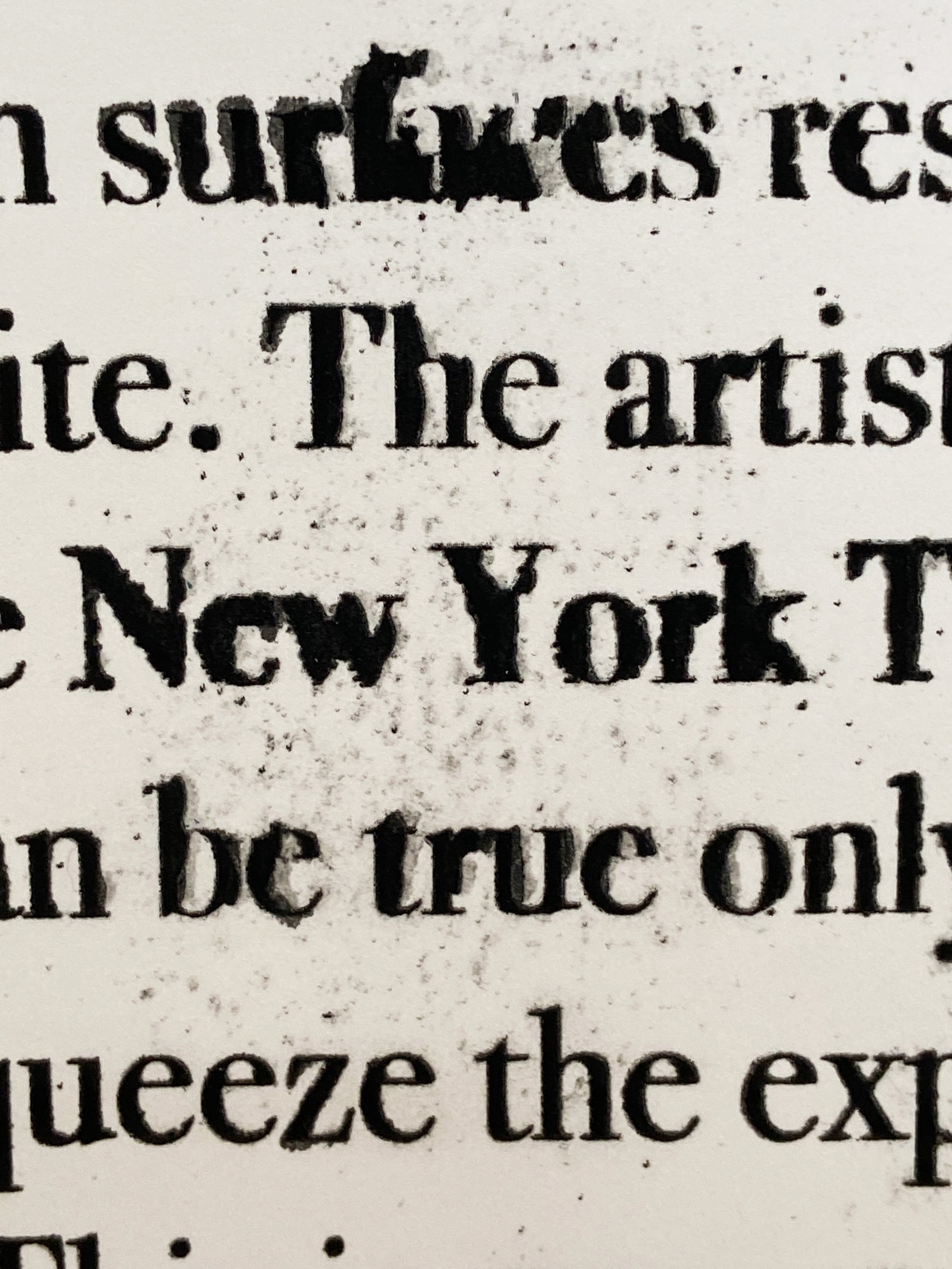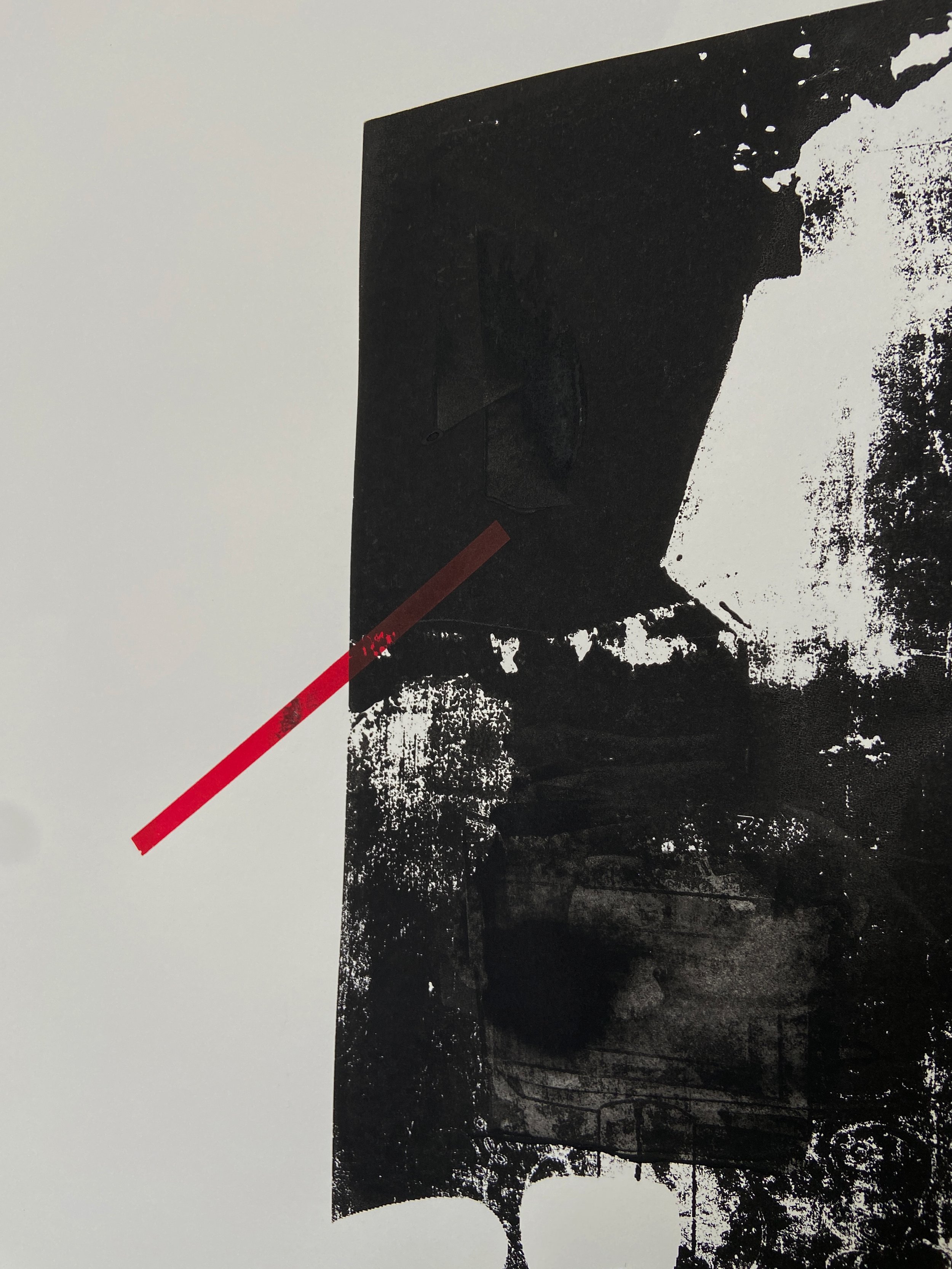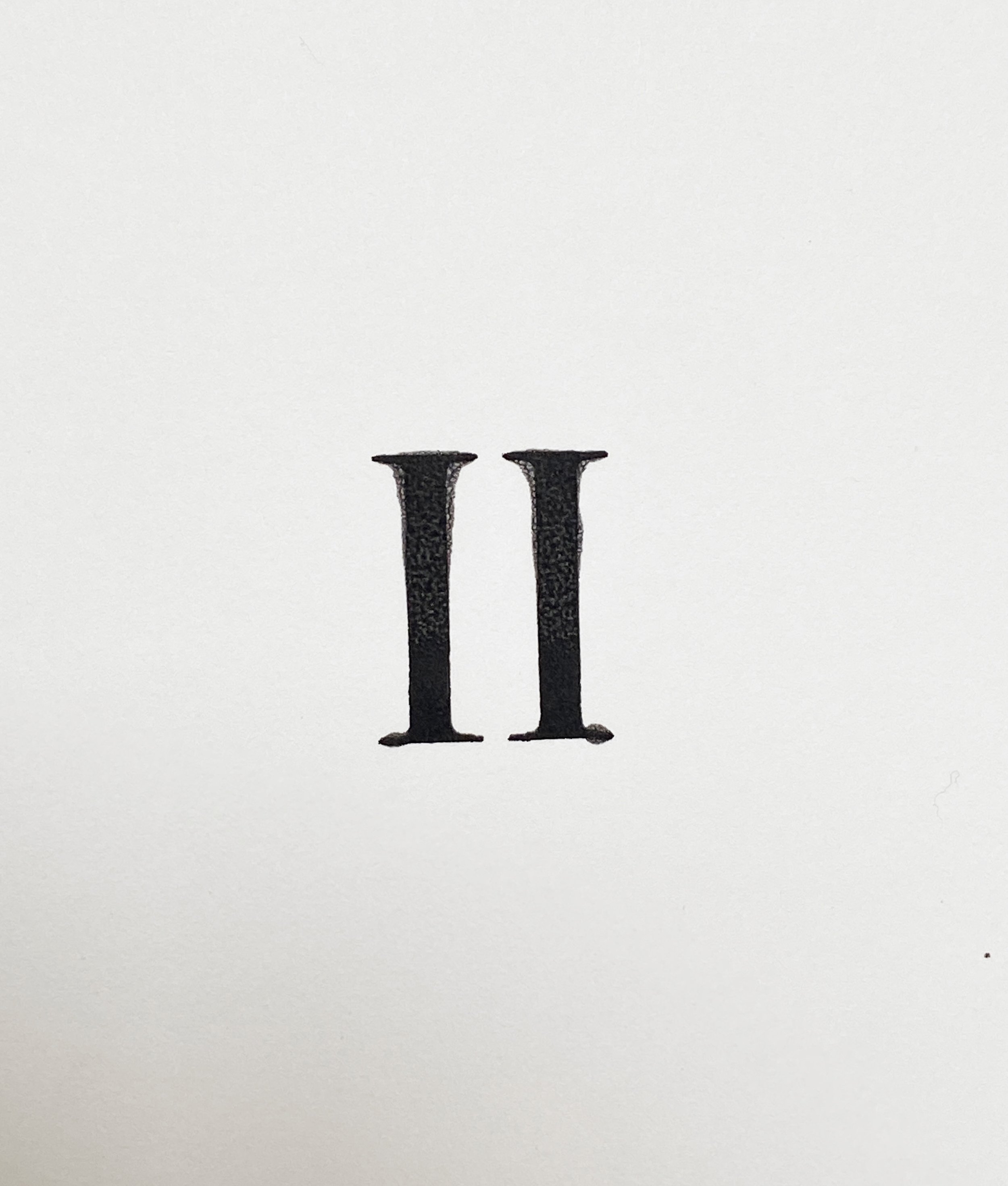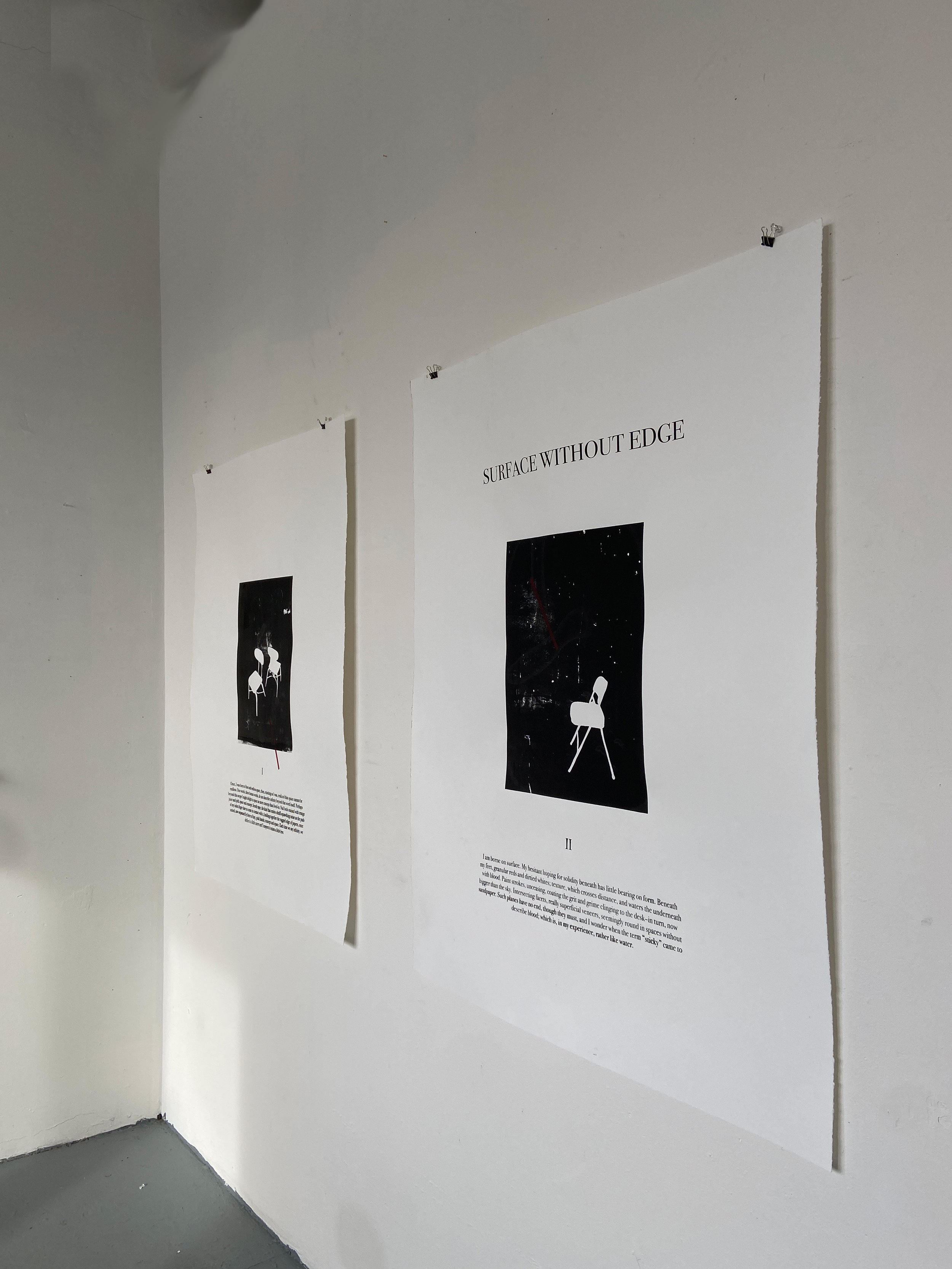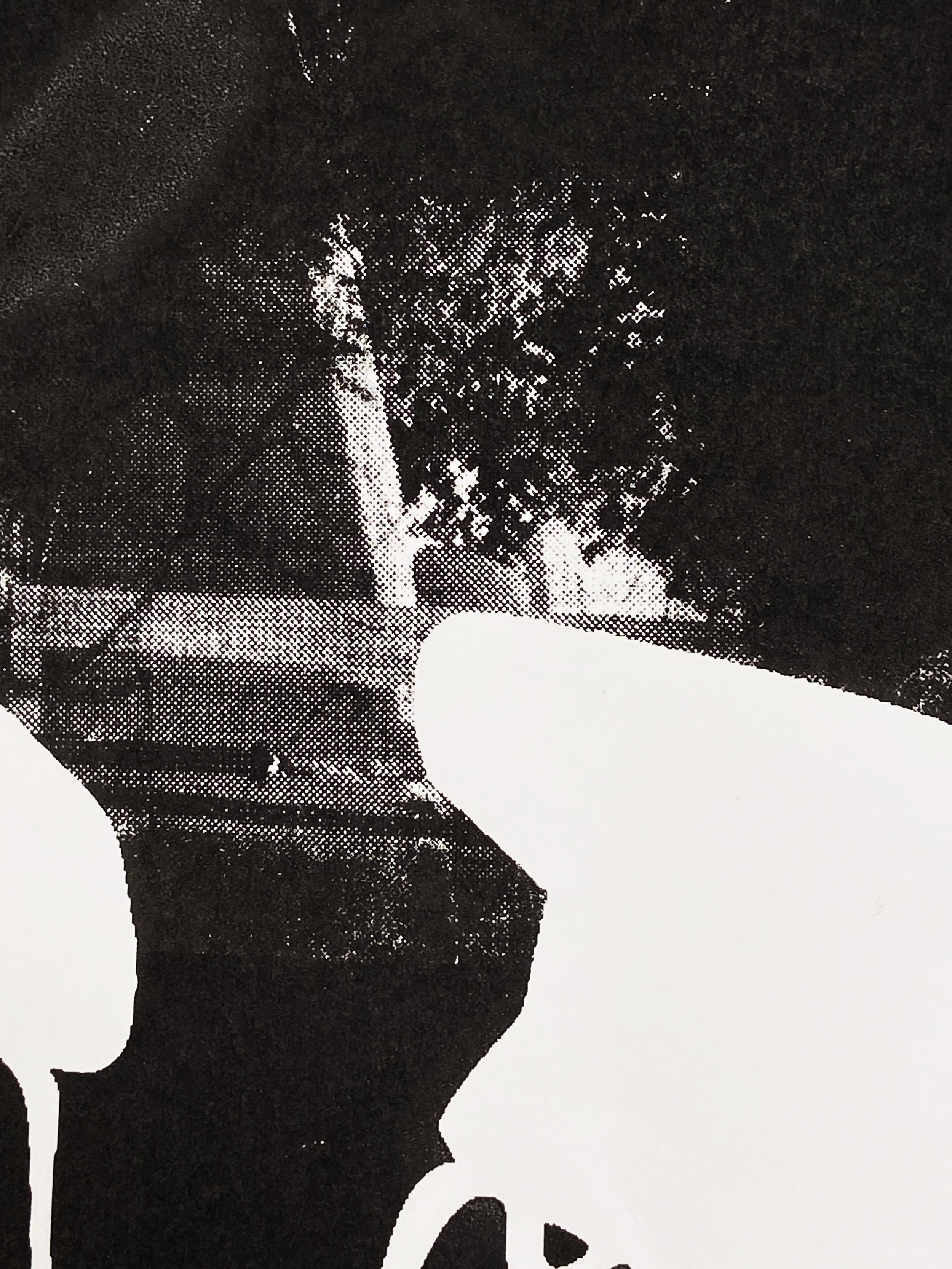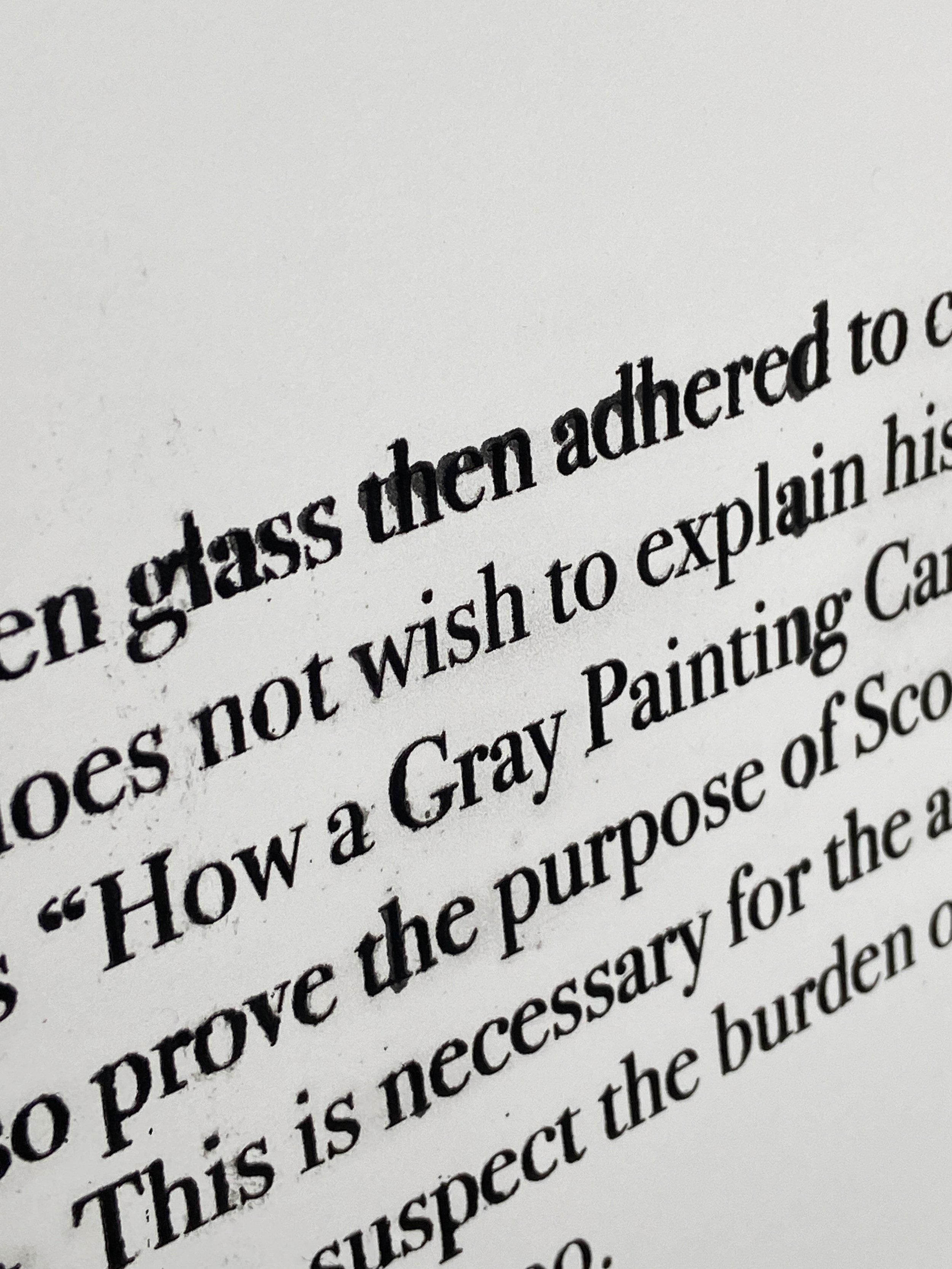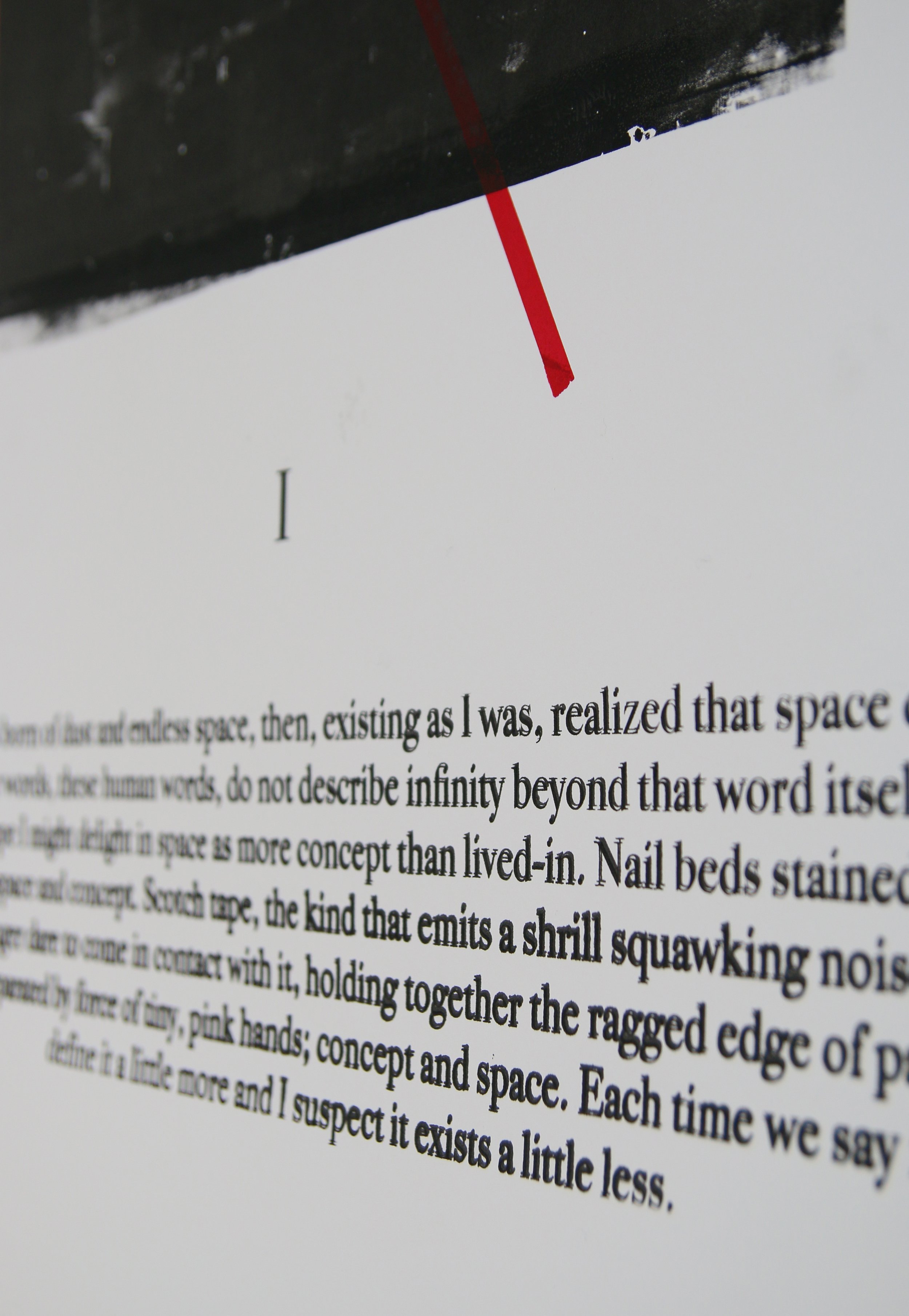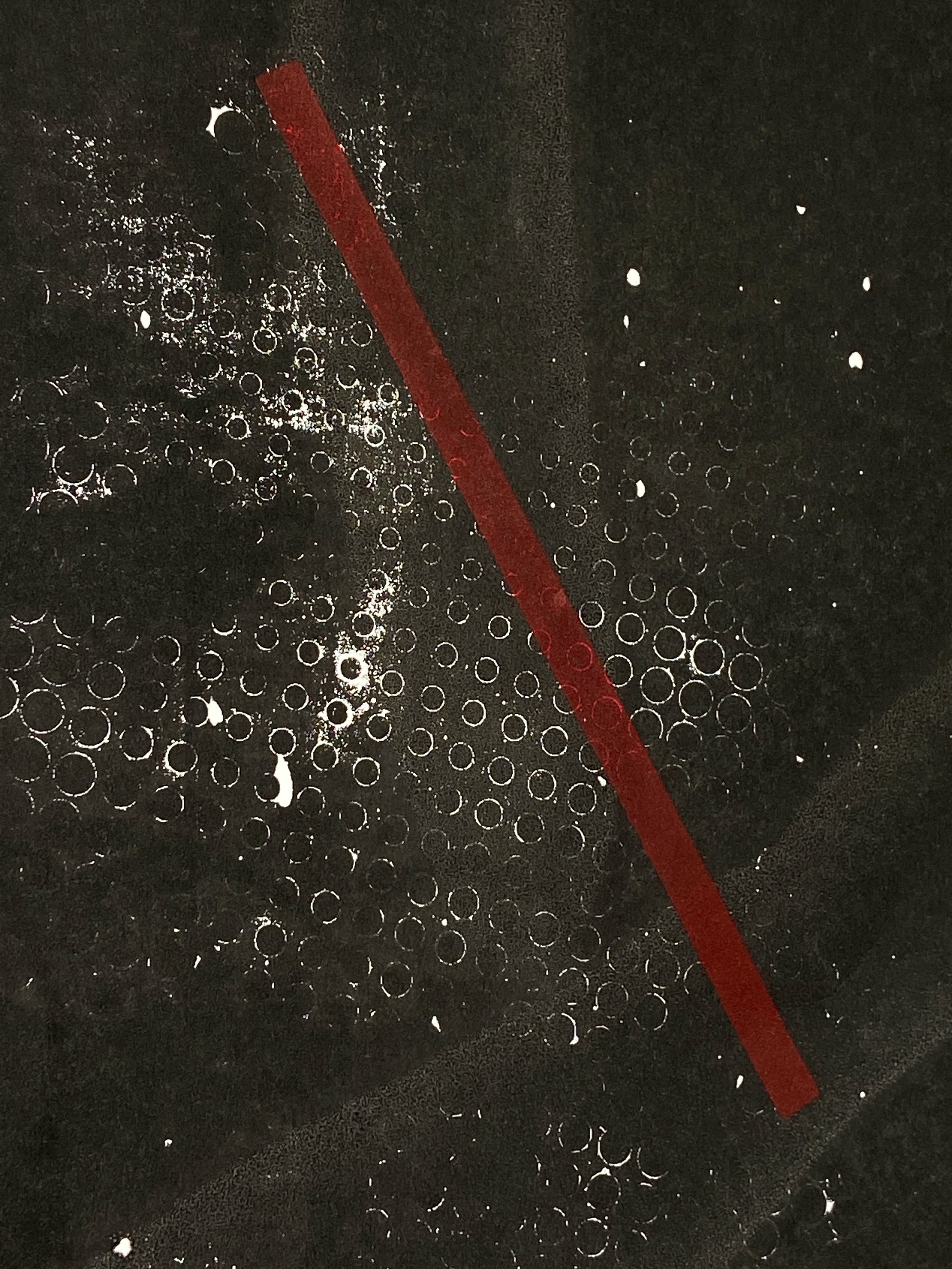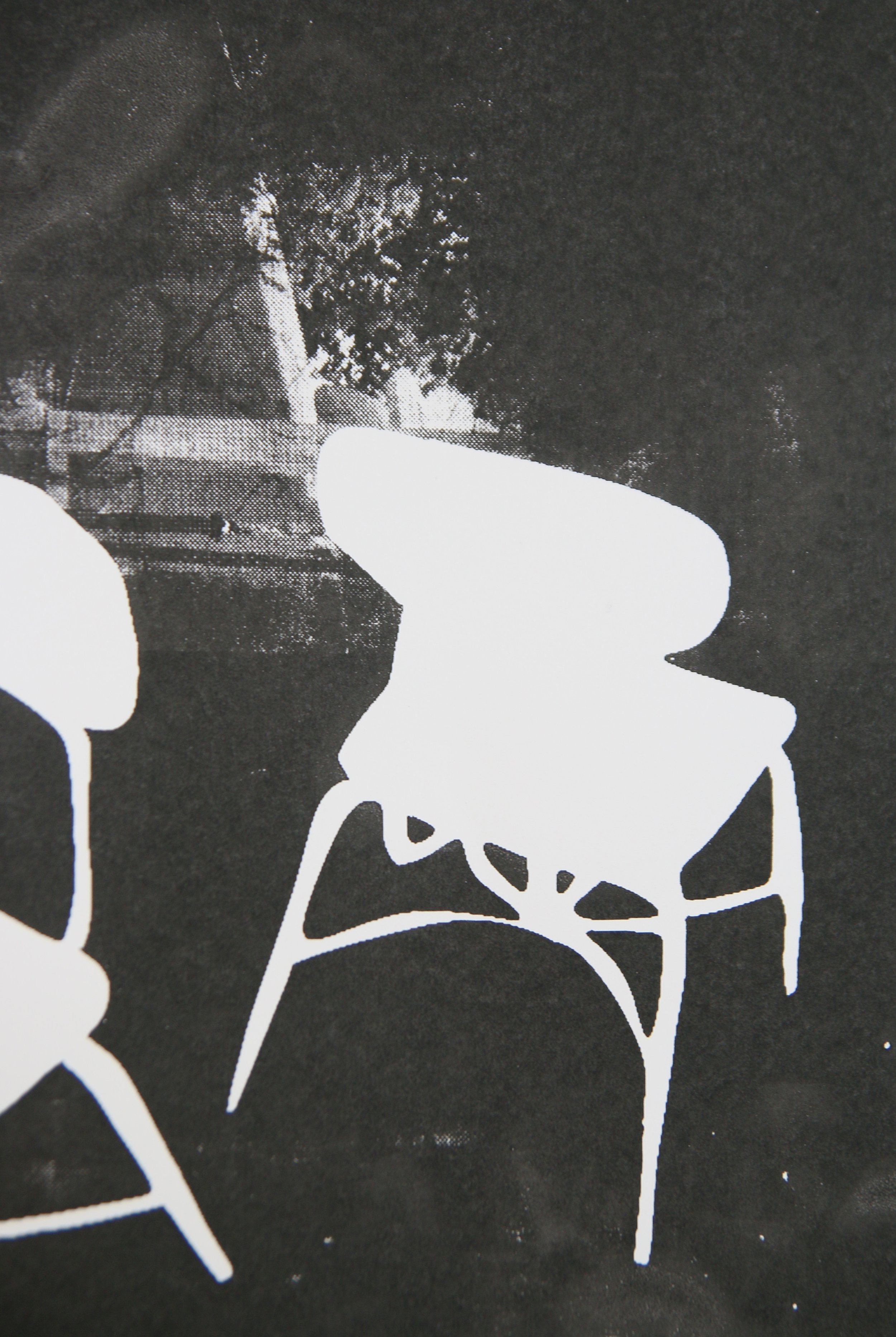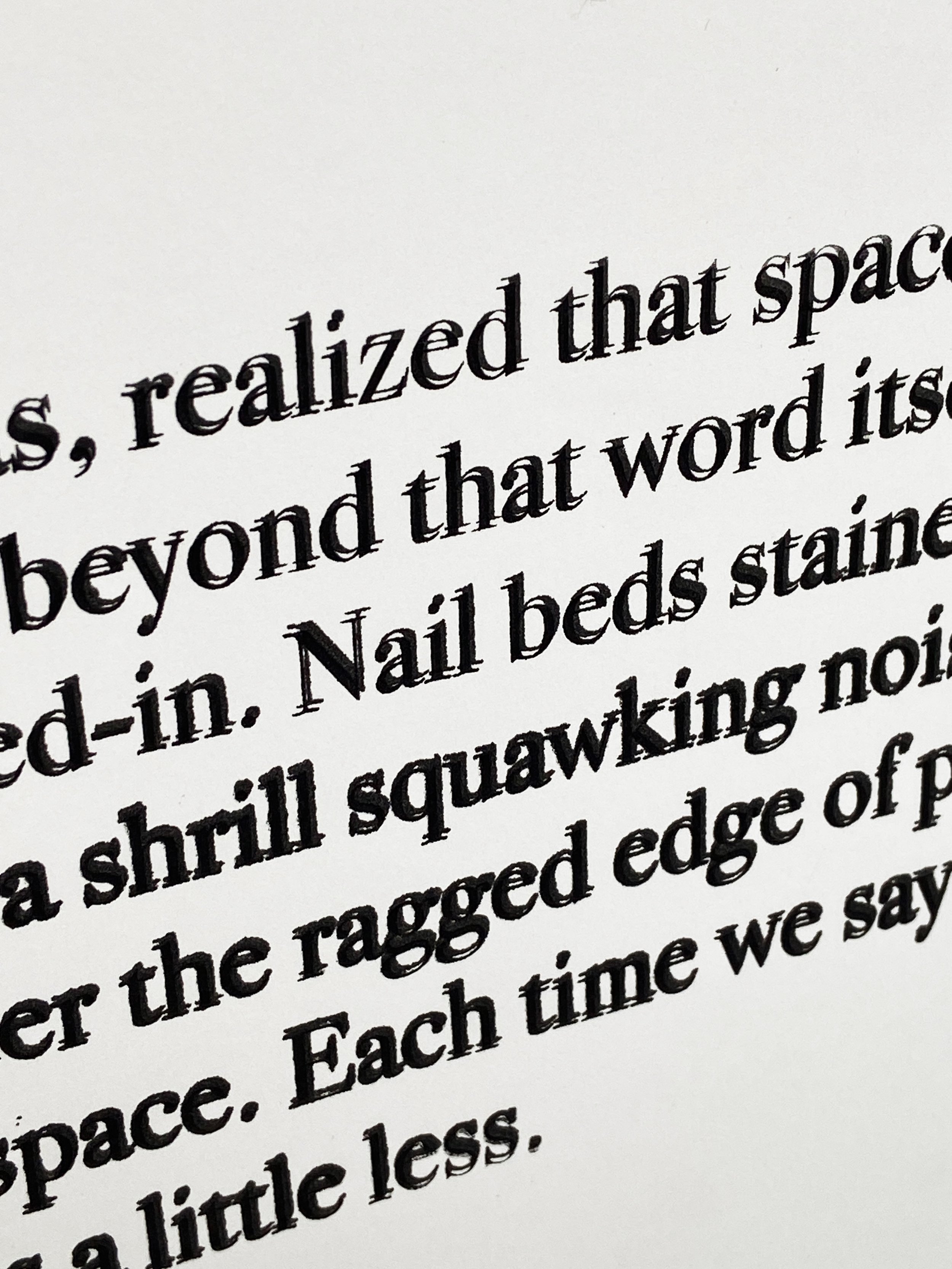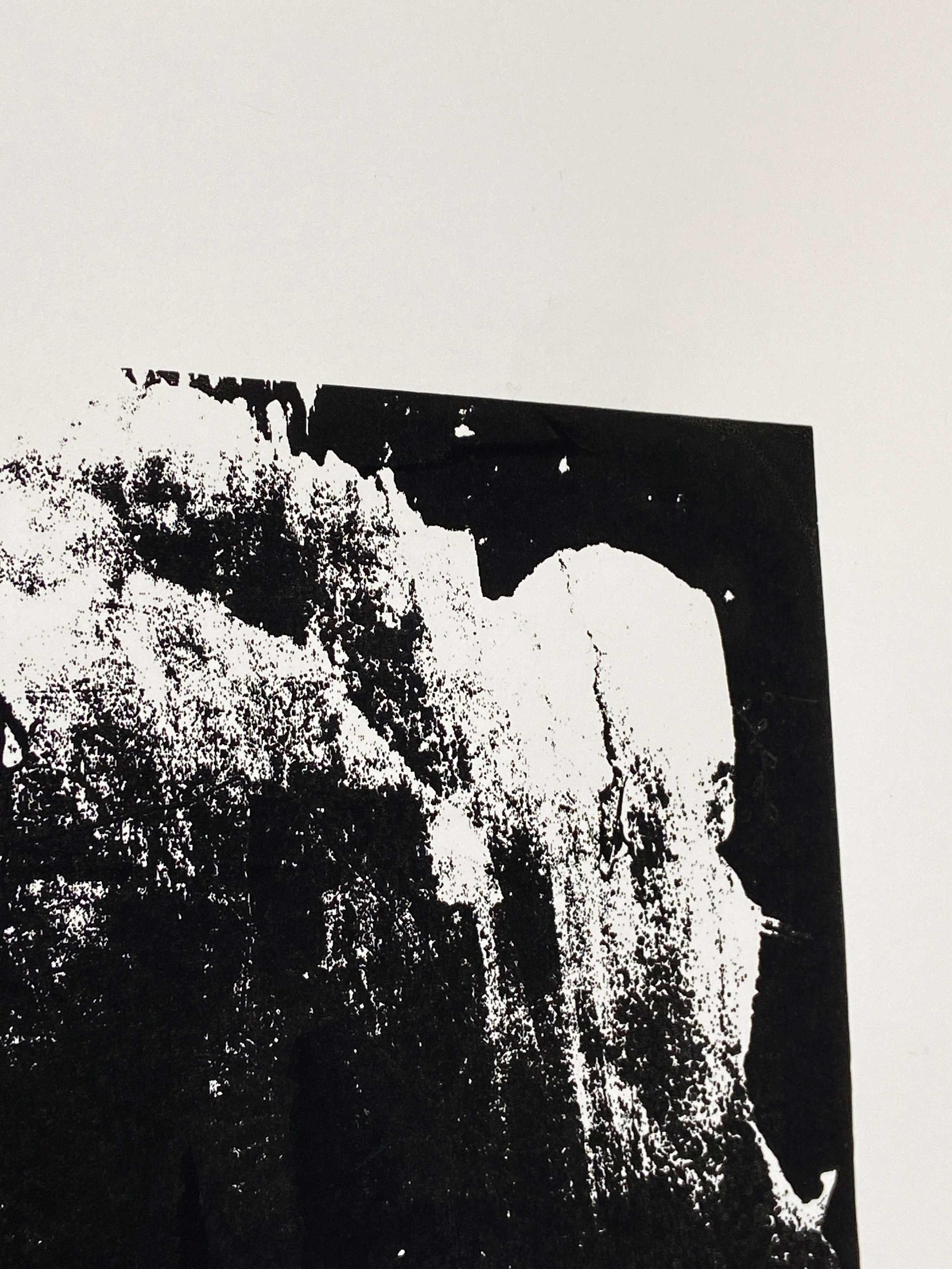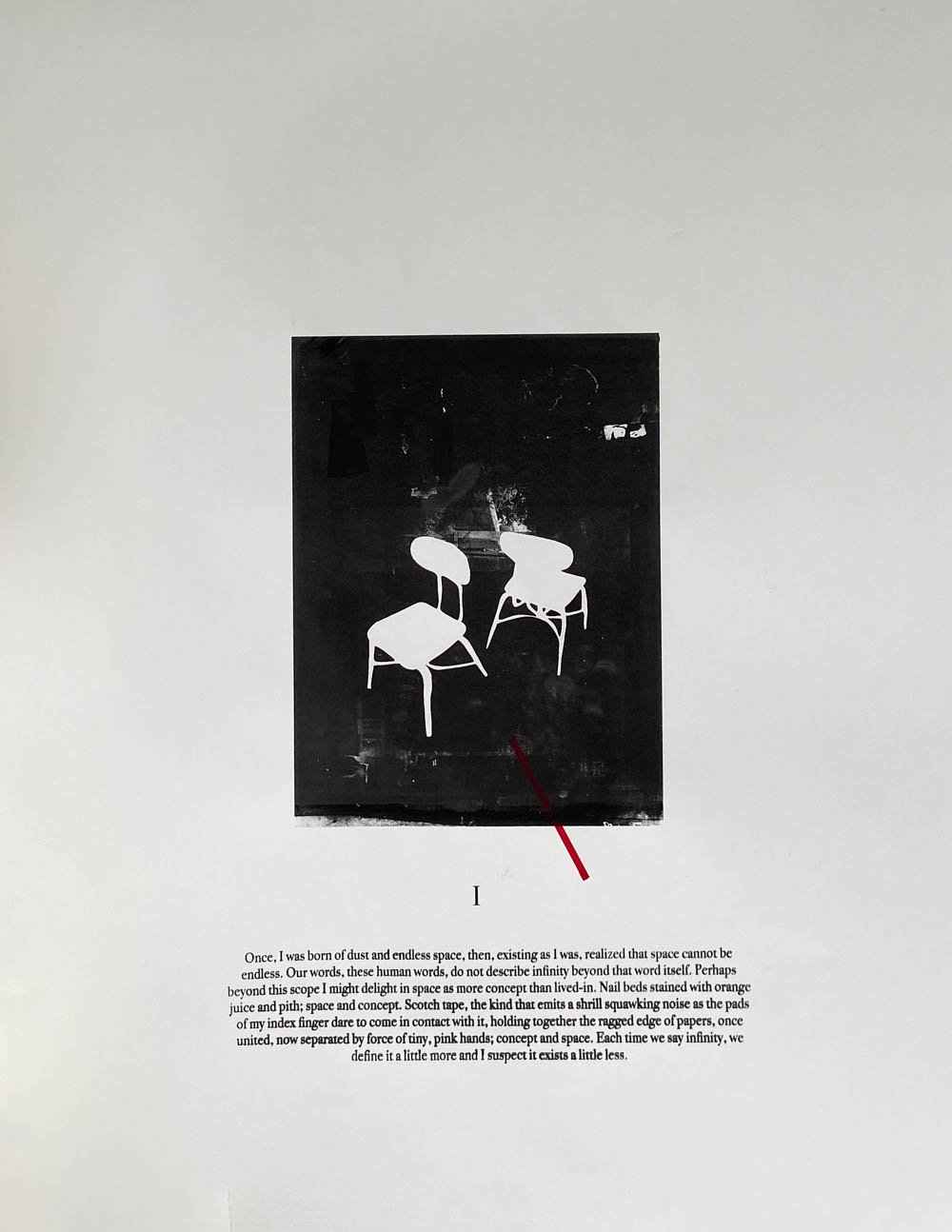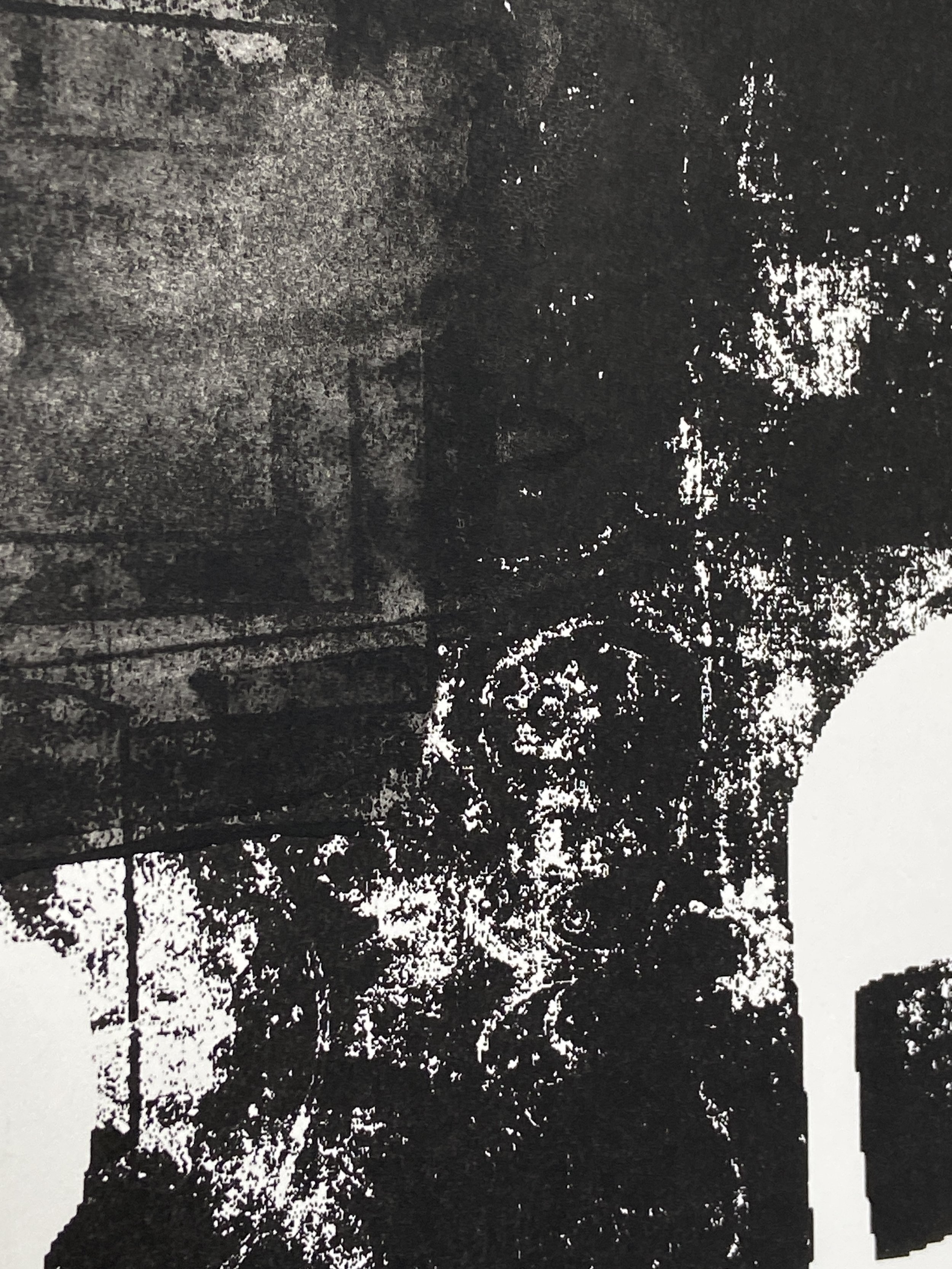“Surface Without Edge”, Silkscreen Monotype, 44"“x 50”, November 2023.
SURFACE WITHOUT EDGE
1
Once, I was born of dust and endless space, then, existing as I was, realized that space cannot be endless. Our words, these human words, do not describe infinity beyond that word itself. Perhaps beyond this scope I might delight in space as more concept than lived-in. Nail beds stained with orange juice and pith; space and concept. Scotch tape, the kind that emits a shrill squawking noise as the pads of my index finger dare to come in contact with it, holding together the ragged edge of papers, once united, now separated by force of tiny, pink hands; concept and space. Each time we say infinity we define it a little more and I suspect it exists a little less.
2
I am borne on surface. My hesitant hoping for solidity beneath has little bearing on form. Beneath my feet, granular reds and dirtied whites; texture, which crosses distance, and waters the underneath with blood. Paint strokes, unceasing, coating the grit and grime clinging to the desk–in turn, now bigger than the sky. Intersecting facets, really superficial veneers, seemingly round in spaces without sandpaper. Such planes have no end, though they must, and I wonder when the term “sticky” came to describe blood; which is, in my experience, rather like water.
3
Then, I am at a bourn—sandwiched between surfaces resembling broken glass then adhered to cardboard with Elmer’s glue and a delicate, streaking graphite. The artist in question does not wish to explain his art. I certainly hope he doesn’t, yet imagine he must. The New York Times ponders “How a Gray Painting Can Break Your Heart.” I say it's in the spoon. Such things can be true only of art, and so prove the purpose of Scotch tape. I think the artist must be sandwiched too. First, to squeeze the explanation out. This is necessary for the audience to make art. Then, to discover the meaning himself. This is necessary for the artist to suspect the burden of infinite space. He is caught; borne then bourn, now everbearing. I, too.
Beginning with an ekphrastic prose poem, written in response to the paintings of Jasper Johns, “Surface Without Edge” turns traditional ekphrasis on its head. This “reverse” ekphrasis comes from the assertion that ekprhasis is a two-way street; art based on poetic works are of the same nature as poetry based on visual artworks. Instead of stopping at a ekphrastic poem or artwork, I aim to go one step further: first writing an ekphrastic prose poem, and then creating an ekphrastic silkscreen print derived from unabashedly derivative poetry.
At nearly five feet tall, “Surface Without Edge” is a triptych meant to be viewed on the wall. The imagery is created with a variety of silkscreen techniques: monotype with reclaimed screens to allow for old images to pass through, distorting text with chemicals, atypical pressure, smearing, and the application of ink with no screen for added texture. A singular red line on each print breaks the boundary of the rectangle and expands the void, while enforcing the relationship the image has to the paper. The chair, a staple image in my work, departs from its usual allusions to home and instead serves as an anonymous figure, in turn allowing the viewer to engage with the void of the surface.
Utilizing three different iterates of the word born, I center the work on birth, flight, and boundary. Then, uniting each notion, ask questions about the nature of space, originality, and the role of the artist.

